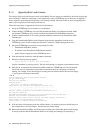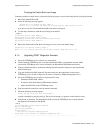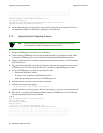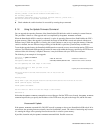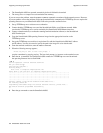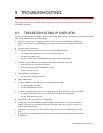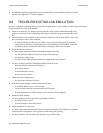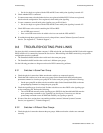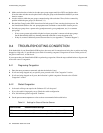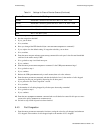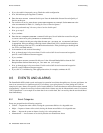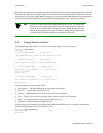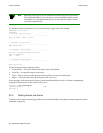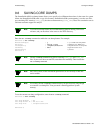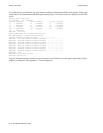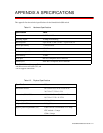
9-4 SmartSwitch 6500 User Guide
Troubleshooting Congestion Troubleshooting
2. Make certain that the switches in the other peer group support multi-level PGLs and border nodes.
If not, the other switches must be placed in the same peer group as the SmartSwitch 6500 if you want
them to connect.
3. Are the switches within the peer groups communicating with each other? If not, fix the connectivity
problem within the peer group (see Section 9.3.1).
4. Has the Peer Group Leader (PGL) been elected in both groups? If not, start the election process. On
the SmartSwitch 6500 use the
set pnniplgelection command to start the PGL election process.
5. Do both peer groups have a parent node (grandparent node, great grandparent, etc.) in a common
peer group?
-
If not, create a parent node within a higher-level peer group that’s common to both peer groups.
On the SmartSwitch 6500, use the
add pnninode command to create the parent node.
-
If they do, contact Cabletron Systems Customer Service (see Appendix C, "Technical Support")
9.4 TROUBLESHOOTING CONGESTION
If the bandwidth of your SmartSwitch 6500 begins to decrease, and if connections are being lost or packets are being
dropped at a high rate, it’s possible that your switch is becoming congested. Congestion can occur on the port level,
the global switch level, or both levels.
If you suspect that your SmartSwitch 6500 is experiencing congestion, follow the steps outlined below to diagnose and
resolve the cause of congestion.
9.4.1 Diagnosing Congestion
1. Enter the show portstats command, and take the default of (all).
2. If cells are being dropped only on specific ports, proceed to the “Port Congestion” section.
3. If cells are being dropped on all ports, the indication is global congestion. Proceed to the “Global
Congestion” section.
9.4.2 Global Congestion
1. Is the total cell drop rate equal to the Unknown VC cell drop rate?
•
If yes, the switch is improperly set up. Check the switch configuration.
•
If no, this indicates global congestion. Continue.
2. Set the porttrafficcongestion values to those recommended in the table below.
Table 9-1 Settings for Class of Service Queues
Service Class Recommended Settings
CBR Fewer than 100 connections on a port: Min = 64, Max = 1024
CBR More than 100 connections on a port: Min = 128, Max = 1024



